China has been the world’s largest manufacturing hub for decades, and in 2025 it remains the backbone of global e-commerce supply chains. From consumer electronics and fashion to home décor and beauty tools, the country’s factories and wholesalers provide nearly every product niche at competitive prices. According to industry estimates, more than 70% of dropshipping businesses rely on China dropshipping websites for sourcing, making them an indispensable part of the global e-commerce ecosystem.
What makes China unique is not only its low production costs but also its speed of adaptation. When a product goes viral on TikTok or Instagram, Chinese suppliers are often the first to manufacture and distribute it at scale. Add to that the growing network of US and EU warehouses many platforms now operate, and sellers can achieve a balance between affordability and fast delivery.
For entrepreneurs, using the right China dropshipping websites means gaining access to an almost limitless catalog of products, flexible order quantities, and reliable fulfillment solutions—all without the risk of holding inventory. This guide will walk you through the 12 best platforms to consider in 2025, helping you identify the right partners for testing new products, scaling your store, or building a long-term private-label brand.
Key Benefits of Using China Dropshipping Websites
Working with China dropshipping websites gives online sellers a unique edge in e-commerce. Beyond the obvious cost savings, these platforms provide flexibility, variety, and scalability that are difficult to match elsewhere. Here are the main advantages:
1. Competitive Pricing and Higher Margins
China’s large-scale manufacturing keeps costs low, allowing sellers to source products at a fraction of the price compared to other regions. This directly translates into stronger profit margins, even after factoring in shipping and marketing expenses.
Example: A fashion accessory that costs $3–$5 on Chinese platforms can easily be resold for $15–$20 in Western markets.
2. Massive Product Variety Across Niches
From fast-moving consumer electronics to niche items like pet accessories or eco-friendly home goods, China dropshipping websites offer millions of SKUs. This makes it easier to test different product categories without committing to bulk orders.
3. Fast Response to Trends
Chinese suppliers are known for quickly adapting to new consumer demands. When a product trend emerges on TikTok, Instagram, or YouTube, it often appears on dropshipping platforms from China within weeks, giving sellers the chance to capitalize on viral demand.
4. Low Minimum Order Quantities (MOQs)
Most platforms allow you to start small—sometimes with no MOQ at all. This flexibility means you can test products without the financial risk of holding large inventories.
5. Global Warehousing and Faster Fulfillment
Many China dropshipping websites now operate warehouses in the US, Europe, and other key regions. This shortens delivery times from weeks to just a few days, helping sellers compete with Amazon-level shipping expectations.
6. Branding and Private Labeling Opportunities
Several platforms support private labeling, custom packaging, and logo printing, which are essential for building a long-term brand. Even simple touches like branded inserts can increase perceived value and boost repeat purchases.
7. Seamless Integrations and Automation
Top platforms integrate directly with Shopify, WooCommerce, eBay, and TikTok Shop. This automation ensures real-time inventory updates, order syncing, and faster processing, allowing sellers to scale with fewer operational headaches.
12 Top China Dropshipping Websites to Source Products in 2025
Choosing the right China dropshipping websites can make or break your e-commerce business. Some platforms are ideal for quick product testing, while others are designed for bulk sourcing, private labeling, or niche specialization. Below are 12 of the most reliable platforms to consider in 2025, each with its unique strengths.
1. CJdropshipping
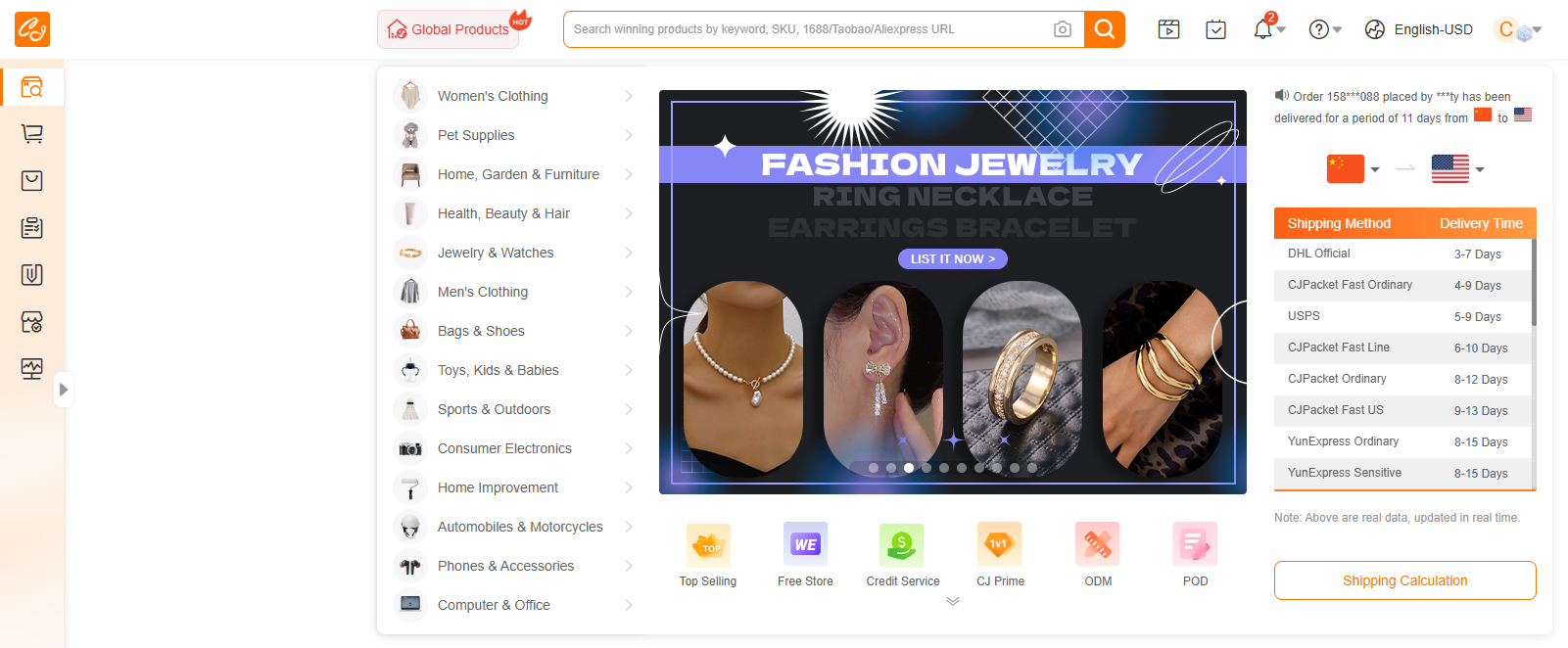
-
Overview: A full-service platform that combines sourcing, fulfillment, and branding into one ecosystem.
-
Key Features:
-
Global warehouses (US, EU, Asia) enabling 2–7 day delivery.
-
Product sourcing requests for items not listed in the catalog.
-
Private labeling, logo printing, and custom packaging.
-
Direct integrations with Shopify, WooCommerce, eBay, TikTok Shop, and more.
-
Automated inventory syncing and order fulfillment.
-
-
Best For: Sellers who want an all-in-one solution with scalable logistics and branding opportunities.
2. AliExpress
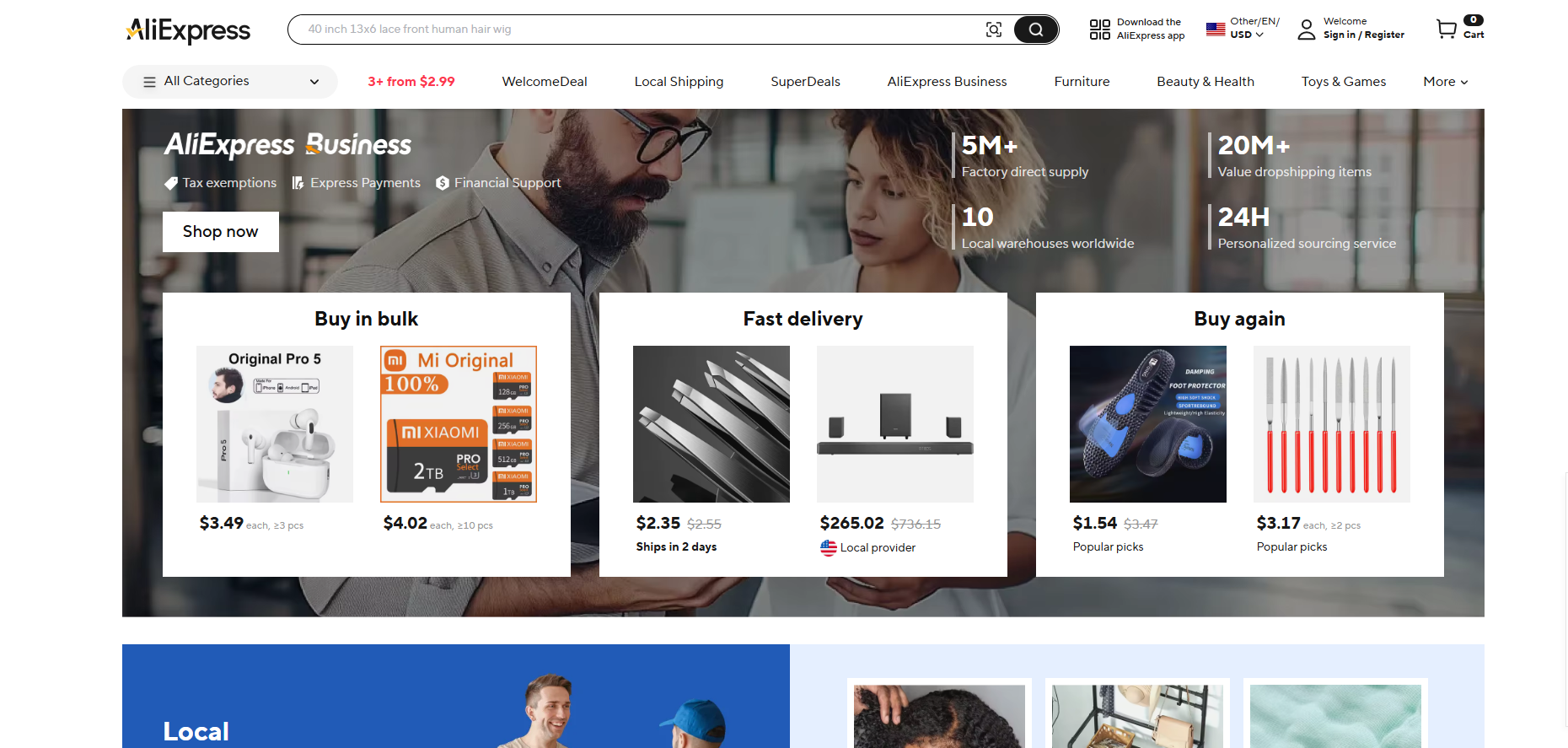
-
Overview: One of the most popular China dropshipping websites, offering millions of products across virtually every niche.
-
Advantages:
-
No minimum order quantity (MOQ).
-
Massive product variety, ideal for testing.
-
Easy to get started with little upfront cost.
-
-
Limitations: Shipping often takes 10–20 days unless suppliers stock items in local warehouses.
-
Best For: Beginners who want to validate product ideas quickly.
3. Alibaba

-
Overview: A global B2B platform connecting buyers directly with manufacturers.
-
Advantages:
-
Factory-level pricing is often the lowest available.
-
Ability to customize products or develop private-label lines.
-
Strong supplier diversity across industries.
-
-
Limitations: Higher MOQs and more complex negotiations compared to AliExpress.
-
Best For: Established sellers ready to scale or invest in branded products.
4. 1688.com
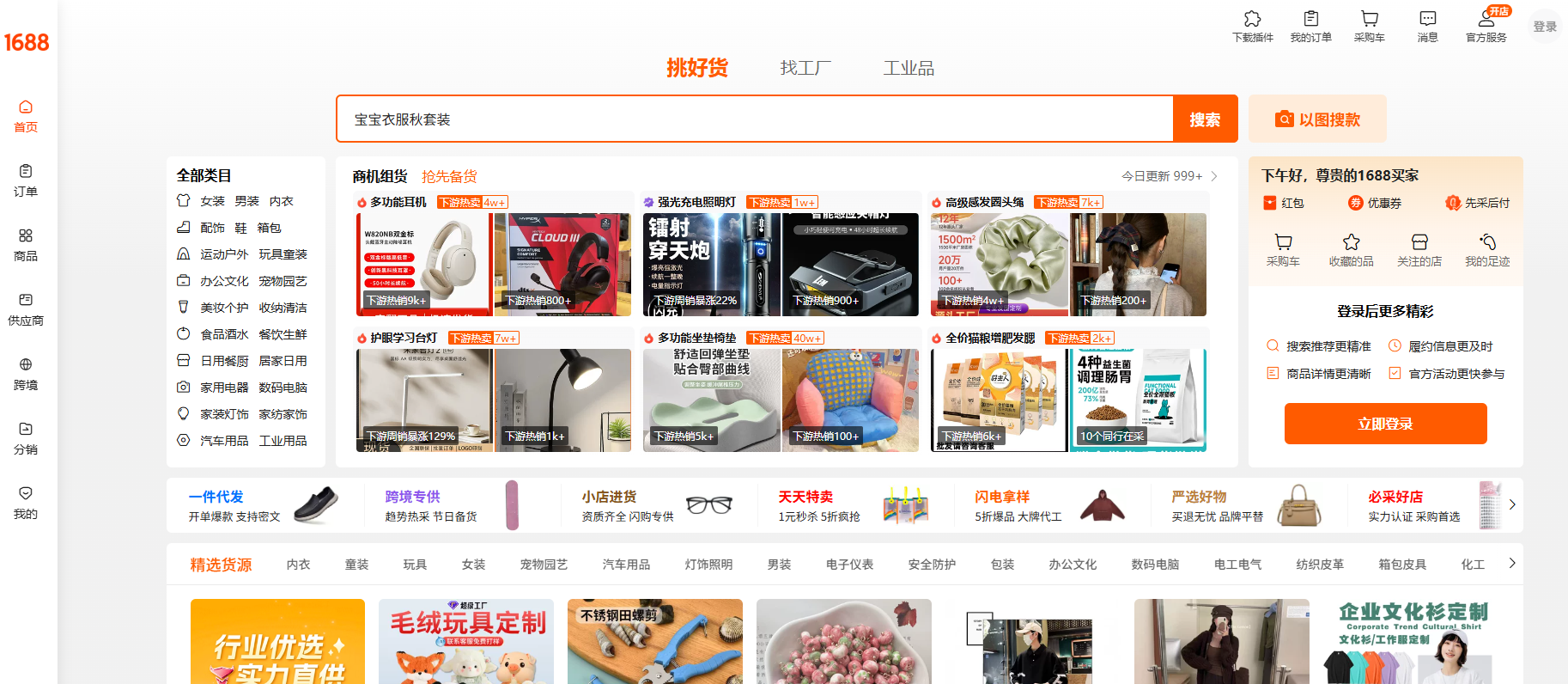
-
Overview: Alibaba’s domestic Chinese platform primarily serves local buyers.
-
Advantages: Extremely competitive pricing, often lower than Alibaba.
-
Limitations: Entirely in Chinese; requires agents or local partners for international sourcing.
-
Best For: Experienced sellers with sourcing agents who want to maximize margins.
5. Banggood

-
Overview: A well-known dropshipping-friendly platform with strong roots in electronics.
-
Advantages:
-
Dedicated dropshipping program with discounts and automation tools.
-
International warehouses for faster shipping.
-
Expanding product categories beyond electronics.
-
-
Best For: Sellers focusing on gadgets, electronics, and lifestyle accessories who value automation.
6. DHgate
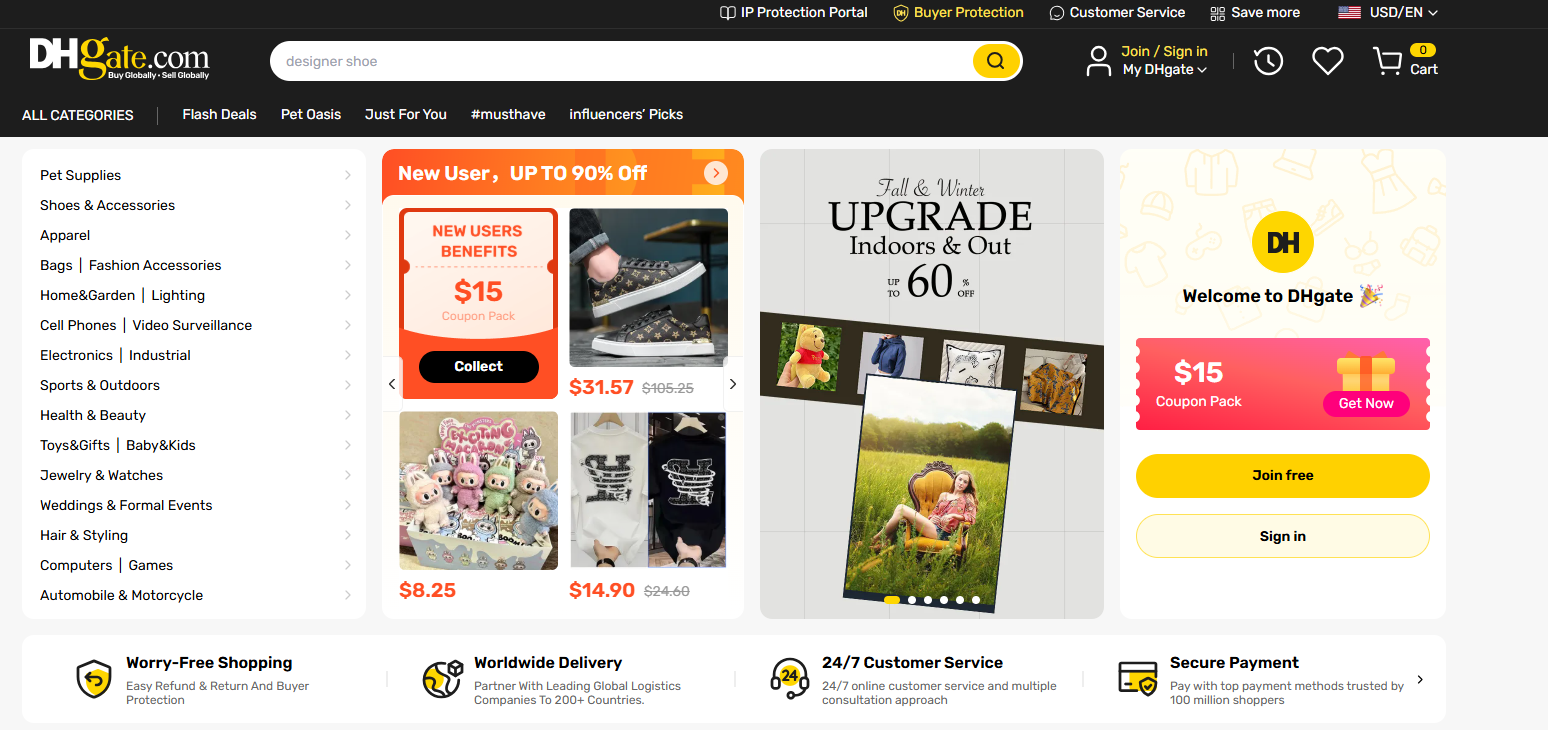
-
Overview: One of the oldest Chinese dropshipping websites, sitting between AliExpress and Alibaba.
-
Advantages:
-
Small wholesale order quantities are possible.
-
Buyer protection with escrow-based transactions.
-
Broad catalog covering fashion, electronics, and home goods.
-
-
Limitations: Supplier quality varies; vetting is essential.
-
Best For: Sellers who want safer small-to-medium batch orders.
7. Made-in-China

-
Overview: A B2B sourcing platform emphasizing verified manufacturers.
-
Advantages:
-
Strong quality control and supplier verification.
-
Great for bulk sourcing and long-term contracts.
-
-
Limitations: Less suitable for small-scale dropshipping.
-
Best For: Sellers building private-label brands or scaling into wholesale.
8. Taobao (via Agents)
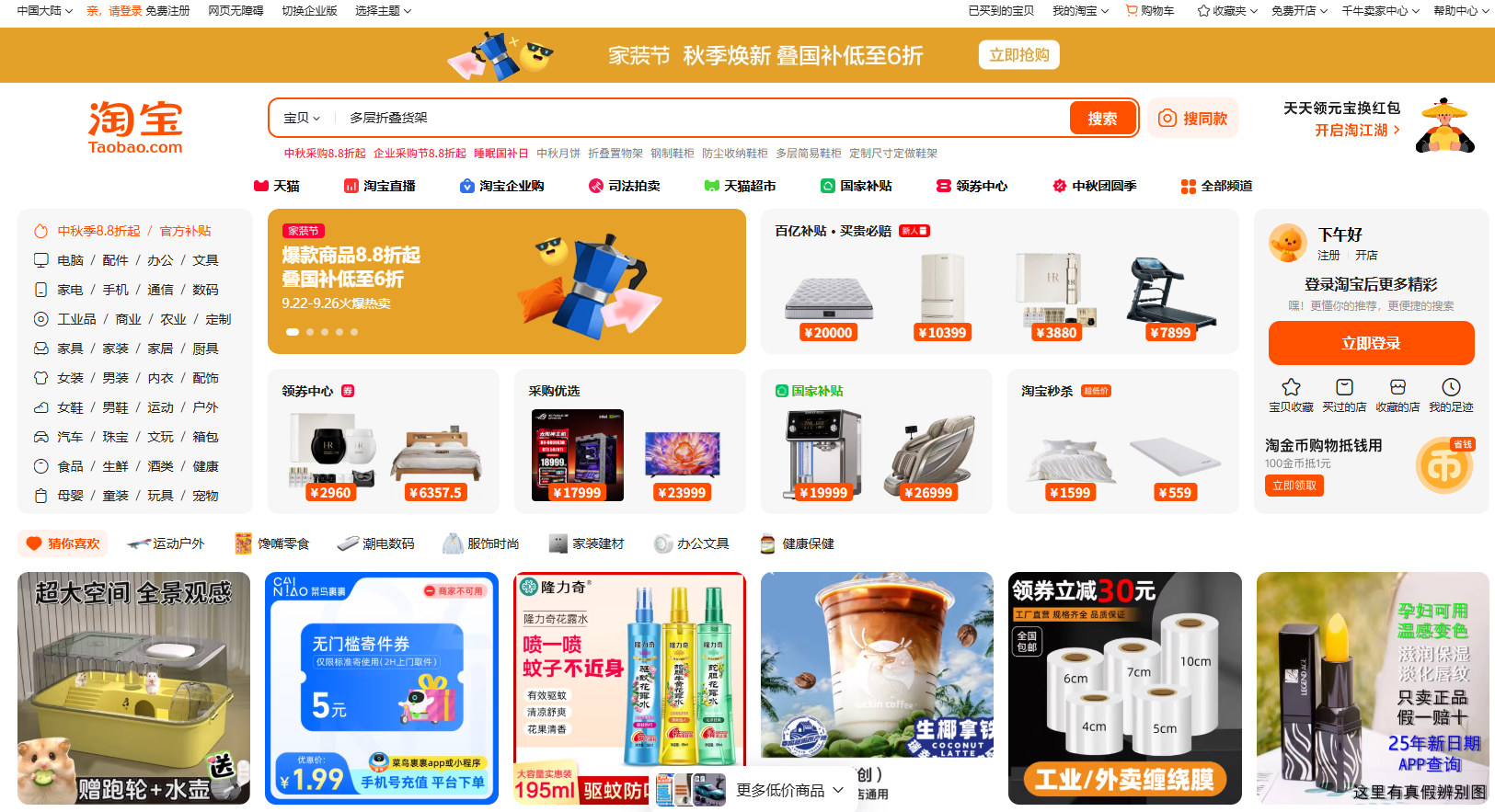
-
Overview: One of China’s largest e-commerce marketplaces, primarily targeting local consumers.
-
Advantages:
-
Extremely wide catalog with low prices.
-
Access to trending products before they hit global platforms.
-
-
Limitations: Not designed for international buyers; requires sourcing agents.
-
Best For: Sellers seeking unique or trending products with the help of reliable agents.
9. Global Sources
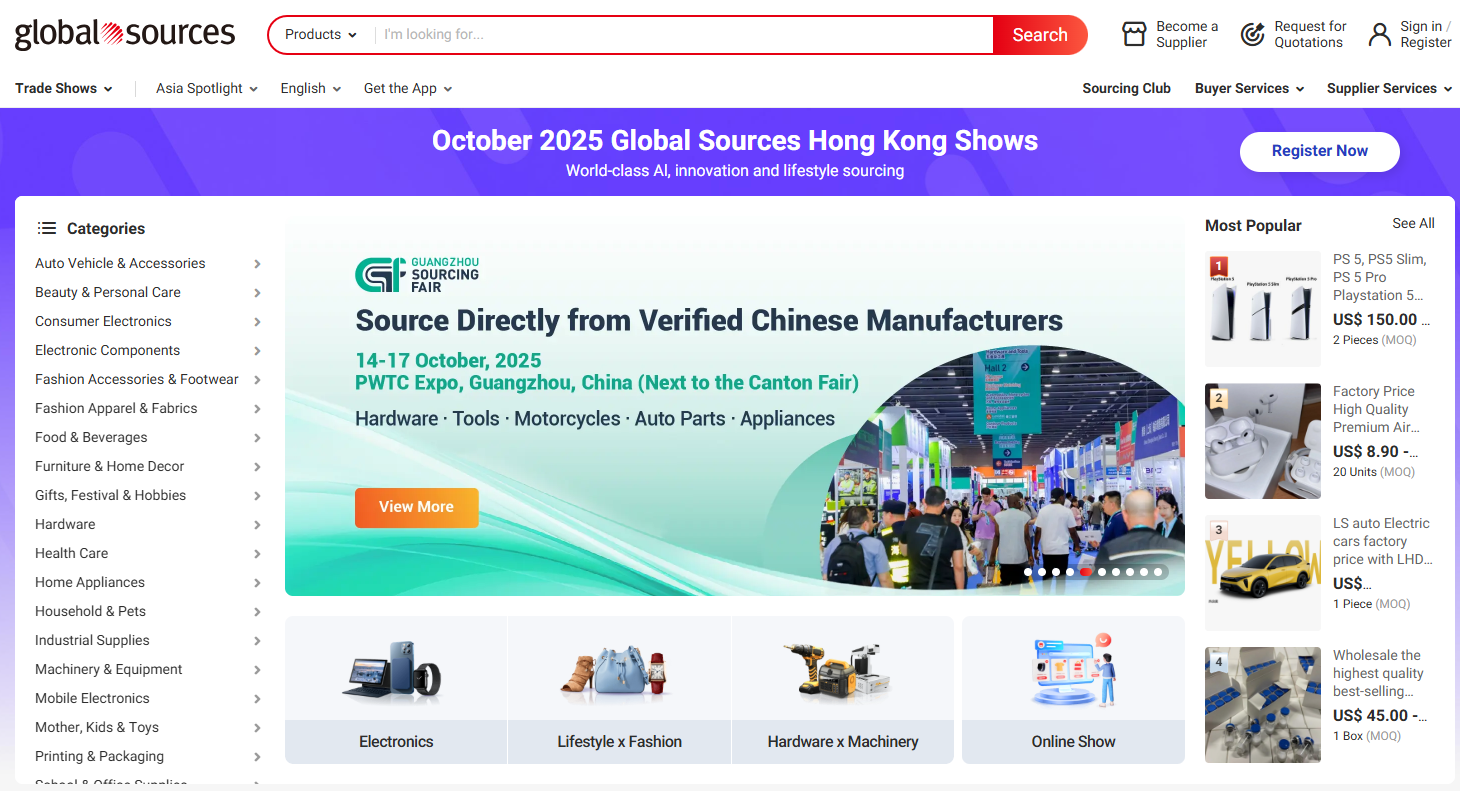
-
Overview: A long-established platform that connects international buyers with vetted Chinese manufacturers.
-
Advantages:
-
Higher supplier vetting standards.
-
Strong presence in electronics and industrial goods.
-
Many suppliers participate in global trade fairs.
-
-
Limitations: Smaller catalog compared to Alibaba.
-
Best For: Experienced sellers who prioritize quality and supplier reliability.
10. Gearbest

-
Overview: A niche-focused platform specializing in electronics and smart devices.
-
Advantages:
-
Competitive pricing on tech products.
-
International shipping and partnerships.
-
-
Limitations: Narrower catalog; less variety outside electronics.
-
Best For: Tech-oriented stores or gadget-focused niches.
11. LightInTheBox

-
Overview: A global retail platform offering a wide selection of fashion, home décor, and consumer goods.
-
Advantages:
-
Affordable pricing and worldwide shipping.
-
Covers multiple categories, including apparel and electronics.
-
-
Limitations: Mixed reviews on fulfillment times and consistency.
-
Best For: Sellers wanting diverse catalogs and affordable sourcing options.
12. Yaaku (and Niche Suppliers)

-
Overview: Smaller platforms like Yaaku target specific categories such as apparel, beauty, or home décor.
-
Advantages:
-
Unique, less-saturated product selection.
-
Easier to differentiate your store from competitors.
-
-
Limitations: Smaller catalogs, limited automation, or integrations.
-
Best For: Sellers aiming for niche markets or looking to stand out with specialized products.
Key takeaway: Each of these China dropshipping websites serves a different purpose. AliExpress and DHgate are best for low-risk testing, Alibaba and 1688 work for bulk and private label, while CJdropshipping provides a comprehensive solution that combines sourcing flexibility, fast fulfillment, and branding support. The right mix depends on your store’s goals—whether you’re validating products, scaling into wholesale, or building a long-term brand.
What to Consider When Choosing a Website for Sourcing
Not all China dropshipping websites are created equal. Some excel at offering low-cost products, while others provide better fulfillment, branding, or platform integrations. Before committing to one or more partners, it’s important to evaluate them based on these key factors:
1. Product Quality and Supplier Reliability
Low prices mean nothing if the products disappoint customers. Look for platforms that vet their suppliers or allow you to order samples. Reliable suppliers reduce returns and build your store’s reputation.
Tip: Always order test samples before adding a product to your store.
2. Shipping Options and Delivery Speed
Long shipping times are one of the biggest risks of dropshipping. Prefer websites that offer multiple shipping methods and overseas warehouses in regions like the US or Europe. Faster delivery translates into fewer refunds and happier customers.
3. Integration with E-Commerce Platforms
Automation saves time and prevents mistakes. Choose websites that integrate seamlessly with Shopify, WooCommerce, eBay, or TikTok Shop. Real-time syncing for orders and inventory helps avoid overselling and keeps customers informed.
4. Branding and Customization Services
In competitive niches, branding makes the difference. Some Chinese dropshipping websites offer private labeling, logo printing, and custom packaging. These services allow you to transform generic products into branded experiences.
5. Transparent Pricing and Clear Policies
Hidden fees for processing, returns, or storage can eat away at your profits. Make sure your chosen platform offers transparent pricing and clearly defined return/refund policies.
6. Customer Service and Communication
Responsive support is crucial when handling urgent orders or product issues. Evaluate whether the platform has accessible communication channels and responsive account managers.
7. Scalability and Product Range
A good partner should grow with you. Start with small test orders, but make sure the website can also handle larger volumes as your business scales. A wide product variety also gives you room to expand into new niches without needing to switch platforms.
Tips for Maximizing Profit When Sourcing from China
Using China dropshipping websites opens the door to affordable products and endless variety, but higher profits require more than just low sourcing costs. The key is to combine smart product selection, effective logistics, and brand-building strategies. Here are practical tips to maximize margins in 2025:
1. Test Products Before Scaling
-
Always order samples to check product quality, packaging durability, and delivery times.
-
This helps avoid bad reviews, high return rates, and wasted ad spend.
-
Example: A phone charger may look reliable online, but only by testing can you ensure it meets safety standards.
2. Balance Shipping Speed with Costs
-
Economy shipping works for low-ticket items where customers are more patient.
-
High-value or trending products benefit from faster delivery through express shipping or local warehouses.
-
Mixing methods—such as shipping staples in bulk via sea freight while using air freight for trend-driven items—keeps costs down while meeting customer expectations.
3. Focus on Niche and High-Margin Products
-
Generic products like basic T-shirts or phone cases are oversaturated.
-
Use China dropshipping websites to find niche categories such as eco-friendly homeware, ergonomic office tools, or pet accessories with higher perceived value.
-
Smaller niches often allow for premium pricing with less competition.
4. Invest in Branding and Custom Packaging
-
Branding elevates products beyond their commodity value.
-
Even affordable items can command higher prices with custom packaging, logo printing, or thank-you inserts.
-
Example: A plain $10 kitchen gadget could sell for $25 with professional packaging and branding.
5. Negotiate Better Terms with Suppliers
-
Once you have consistent sales, ask suppliers for discounts, lower shipping rates, or exclusive deals.
-
Building long-term relationships often results in better margins and priority stock access.
-
Platforms like Alibaba and 1688 are designed for negotiation, while all-in-one sites like CJdropshipping streamline the process.
6. Diversify Supplier Sources
-
Relying on one supplier is risky. Stockouts, price hikes, or delays can hurt your business.
-
Use a mix of platforms (e.g., CJdropshipping, AliExpress, DHgate) to reduce risk and improve flexibility.
-
Diversification ensures you can pivot quickly if one supplier fails.
7. Account for Hidden Costs in Pricing
-
Customs duties, return fees, and platform transaction costs can erode profit margins.
-
Build these into your pricing model to ensure sustainability.
-
Transparent pricing also helps avoid disputes with customers.
8. Leverage Analytics and Market Trends
-
Use tools like Google Trends, TikTok analytics, or product research apps to spot opportunities early.
-
Monitor supplier inventory levels and consumer demand to stay ahead of competitors.
-
Acting early on a trend allows you to maximize profit before markets saturate.
9. Increase Average Order Value (AOV)
-
Bundle products (e.g., a desk with a chair, or a phone case with a screen protector) to raise AOV.
-
Upselling and cross-selling strategies improve profitability without significantly increasing fulfillment costs.
Profits from China dropshipping websites don’t just come from sourcing cheap products. The most successful sellers in 2025 are those who test before scaling, manage shipping wisely, focus on niches, invest in branding, negotiate better deals, and use data-driven strategies to anticipate trends. By approaching sourcing strategically, you can turn low-cost supply chains into a long-term competitive advantage.
Final Thoughts: Choosing the Right Partner for Growth
Dropshipping in 2025 is no longer just about finding the cheapest supplier—it’s about building a sustainable business with partners who can support your growth. The best China dropshipping websites each serve a different purpose: some are ideal for beginners testing new niches, others are better for scaling into bulk orders or private-label brands, and a few provide niche-focused catalogs that help stores stand out in crowded markets.
For new sellers, platforms like AliExpress or DHgate remain useful starting points, offering a broad range of products and little upfront risk. As your business matures, Alibaba, 1688, and Made-in-China open the door to wholesale pricing and more control over customization. And if your strategy is to differentiate through niche categories, working with sites like Global Sources or smaller specialty suppliers can give you unique products that aren’t everywhere else.
At the end of the day, choosing the right partner is about clarity—knowing what stage your business is in, what kind of customers you want to serve, and how much control you need over branding and logistics. With the right mix of China dropshipping websites, you can start lean, scale smart, and turn sourcing from China into a reliable engine for growth in 2025 and beyond.
FAQ for China Dropshipping Websites
1. Is CJdropshipping a good website for sourcing products from China?
Yes. CJdropshipping is widely used because it offers product sourcing, US/EU warehouses, custom packaging, and direct integration with platforms like Shopify, WooCommerce, and eBay.
2. How does sourcing from China dropshipping websites compare to US suppliers?
China suppliers typically offer lower product costs and more variety.
3. Do China dropshipping websites integrate with Shopify and WooCommerce?
Most top platforms like CJdropshipping, AliExpress, and Banggood support direct integrations with Shopify, WooCommerce, Amazon, and eBay for automated order fulfillment.
4. Can I private label or brand products when sourcing from China dropshipping websites?
Yes. Some sites like CJdropshipping and Alibaba suppliers provide private label and white-label options, though minimum order requirements may apply.
5. What are the shipping times when dropshipping from China websites?
Shipping from China typically takes 7–20 days depending on the method. Choosing suppliers with US/EU warehouses (like CJdropshipping or Banggood) can shorten delivery to 2–7 days.
